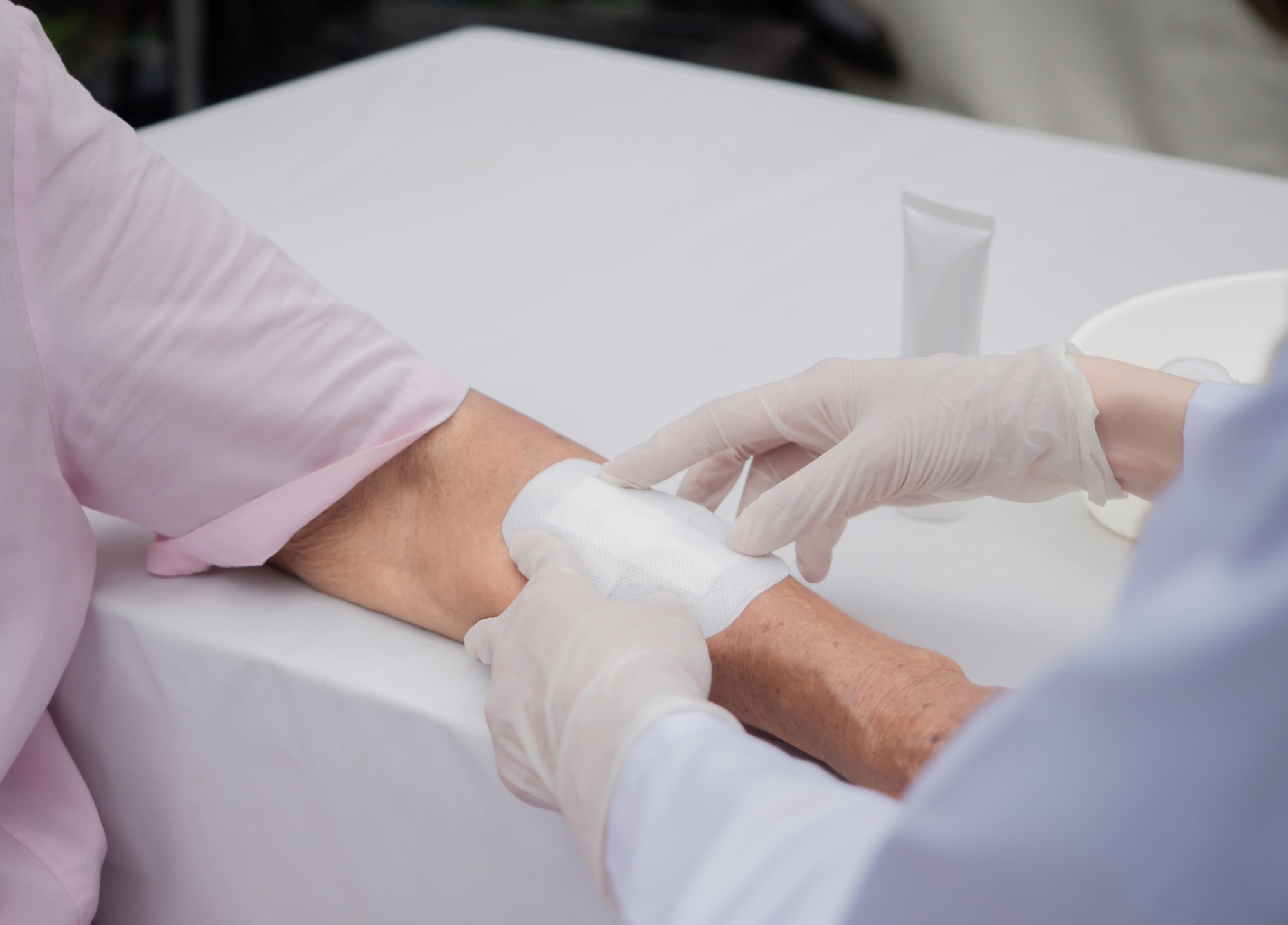A new nanotech-based formulation using quercetin and omega-3 fatty acids shows promise in halting bacterial biofilms and boosting skin cell repair.
 Study: Quercetin and omega-3 fatty acids-loaded lipid hybrid nanoassemblies as promising antimicrobial biofilm strategies. Image Credit: Hparatlala/Shutterstock.com
Study: Quercetin and omega-3 fatty acids-loaded lipid hybrid nanoassemblies as promising antimicrobial biofilm strategies. Image Credit: Hparatlala/Shutterstock.com
Scientists have developed a nanotechnology-based treatment to fight bacterial biofilms in wound infections. The study, published in Materials Today Nano, tested quercetin (Q) and omega-3 fatty acid (ω3)-loaded lipid hybrid nanoassemblies (LHNs) against bacteria Staphylococcus aureus and Escherichia coli.
The research reveals how nanotechnology can enhance the therapeutic efficacy of bioactive compounds for treating chronic wounds and controlling infections.
What Are Lipid Hybrid Nanoassemblies?
LHNs, also known as nanostructured lipid carriers (NLCs), combine solid and liquid lipids to improve drug stability and absorption.
Their small size, typically 20 to 200 nanometers, helps them to penetrate tissues and interact with cells. By adjusting their surface charge and structure, researchers can improve targeting, stability, and compatibility for drug delivery in wound healing.
The Study
The team created Q and ω3-loaded LHNs using a lipid-based hybrid formulation technique. The resulting nanoassemblies had a mean diameter below 200 nm and a negative zeta potential, ensuring their stability. They tested the LHNs against S. aureus and E. coli biofilms using cell culture plates.
The cytotoxicity of the material was evaluated on human dermal fibroblasts to confirm safety.
Get all the details: Grab your PDF here!
Key Results
The LHNs significantly reduced biofilm density and bacterial adhesion within 48 hours. Although the study did not report exact inhibition percentages, both bacteria showed a clear decline.
Encapsulation improved Q and ω3 stability and bioavailability, leading to stronger antimicrobial effects. Rapid release of Q helped disrupt biofilm layers and block bacterial growth. Fibroblast tests showed over 70 % cell viability, confirming the formulation’s biocompatibility.
Implications For Wound Healing
The Q and ω3-loaded LHN-enriched nanofibers could help prevent infections in chronic wounds. They promote cell growth while suppressing bacteria, a dual action vital for healing. The authors suggested integrating LHNs into wound dressings for localized treatment.
This approach could accelerate healing, reduce the risk of infection, and improve patient recovery.
What’s Next
The study highlights the potential of lipid hybrid nanoassemblies in antimicrobial therapy. The researchers plan to test LHNs in animal models to verify wound-healing effects in vivo. They also aim to add other bioactive agents, such as antimicrobial peptides or natural extracts.
If successful, LHNs could become a new tool in fighting antibiotic resistance and chronic wound infections.
Journal Reference
V. Pereira, A, B, et al. (December 2025). Quercetin and omega-3 fatty acids-loaded lipid hybrid nanoassemblies as promising antimicrobial biofilm strategies. Materials Today Nano, 100677 (32). DOI: 10.1016/j.mtnano.2025.100677
Disclaimer: The views expressed here are those of the author expressed in their private capacity and do not necessarily represent the views of AZoM.com Limited T/A AZoNetwork the owner and operator of this website. This disclaimer forms part of the Terms and conditions of use of this website.